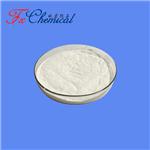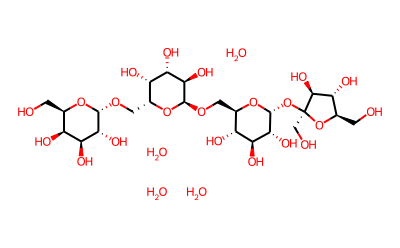Unveiling the Diverse Roles of Stachyose Tetrahydrate
Stachyose tetrahydrate, a functional oligosaccharide, acts as a prebiotic. Stachyose tetrahydrate can prevent indirectly colon cancer cell growth by promoting the proliferation of probiotics or producing beneficial materials in the intestine.

Therapeutic impact of Stachyose tetrahydrate on hyperlipidaemia
Hyperlipidaemia, which is characterized by an excess of lipids or fats in the bloodstream, is a high-risk factor and critical indicator of many metabolic diseases. This study used 16 S rRNA gene sequencing and metabolomics to determine that stachyose (ST) has a therapeutic effect and is a mechanism of hyperlipidaemia. These results show that stachyose tetrahydrate significantly attenuated high-fat diet-induced weight gain and fat deposition while also adjusting the gut microbial composition. Untargeted serum metabolomics identified 12 biomarkers, which suggests that ST may function by regulating metabolic pathways. These results highlight the potential of stachyose tetrahydrate in treating hyperlipidaemia and provides directions for future research including an in-depth investigation of the bioactive components, dosage, and treatment strategies of stachyose tetrahydrate.[1]
The global trend of hyperlipidaemia is worsening, prompting medical and nutrition experts worldwide to dedicate efforts to address this problem. One crucial direction in treating hyperlipidaemia is the creation of functional oligosaccharides derived from natural foods to intervene in lipid metabolism. Stachyose tetrahydrate is a common oligosaccharide that plays a significant role in treating hyperlipidaemia and influences lipid metabolism. As a common food component, ST has a high safety profile and offers a broader business foundation. Despite its potential benefits, the effects of Stachyose tetrahydrate on hyperlipidaemia and lipid metabolism, as well as the corresponding underlying mechanisms, have yet to be thoroughly and systematically studied. To address this gap, this study is a comprehensive investigation using 16 S rRNA gene sequencing technology and metabolomics to explore the impact of Stachyose tetrahydrate on high-fat diet mice and the associated pathways involved. he positive effect of ST on weight management and fat accumulation was further confirmed by a significant reduction in adipocyte volume and number by H&E staining of adipose tissue, which showed a notable decrease in adipocyte volume and number. Additionally, H&E staining of liver tissue demonstrated a significant reversal in the degree of steatosis and the area of fat vacuoles, which indicated an improvement in liver health with ST feeding. Based on these collective findings, it can be concluded that Stachyose tetrahydrate exhibits a remarkable therapeutic effect on hyperlipidaemia and suggests its potential as a promising intervention in managing lipid disorders and associated conditions.
The findings of this study indicate that phenylalanine metabolism and primary bile acid biosynthesis are the main pathways of Stachyose tetrahydrate intervening in hyperlipidaemia. Clarifying this research goal can provide important information on the feasibility and benefits of Stachyose tetrahydrate as a potential drug or treatment in clinical applications. This helps reduce patients’ symptoms of diseases caused by hyperlipidaemia and improves their quality of life. In summary, our study revealed the various ameliorative effects of ST on hyperlipidaemia, including the improvement of liver function and alleviation of blood lipid levels and pathological changes. The mechanism by which Stachyose tetrahydrate treats hyperlipidaemia may be related to improving intestinal microbiota imbalance and regulating phenylalanine metabolism and primary bile acid biosynthesis.
Nondigestible Stachyose tetrahydrate binds membranous HSP90β
Stachyose tetrahydrate, structured with two molecules of α-galactose linked to the glucose-side of sucrose via an α-1,6-glycosidic bond, is a tetrasaccharide naturally abundant in vegetables, beans, and plants. Here, we unexpectedly found that stachyose could bind some key membrane proteins on small IECs and alter the miRNA profile of small IECs-secreted exosomes. It is well accepted that Stachyose tetrahydrate, one of the classic FOs, escapes digestion in the GI tract and directly reaches the colon as “food” for gut bacteria to exert prebiotic effects.37 Here, we have unexpectedly uncovered a novel function of stachyose, which alters the exosomal miRNA profile of small IECs by binding the membranous protein HSP90β when traveling through the “long journey” of the upper digestive system. Stachyose tetrahydrate -altered these miRNAs further shapes the gut microbiota. These findings unveil a new microbiome-independent action mode for indigestible stachyose, which manipulates the gut microbiome by directly “talking” to the small intestine to recompose the small IECs-derived exosomal miRNAs.[2]
In conclusion, we have uncovered a novel function of indigestible Stachyose tetrahydrate within the upper GI tract, where stachyose alters the exosomal miRNA profile of small IECs by directly binding the key membrane protein HSP90β. This new finding challenges the conventional cognition that oligosaccharides are “passersby” of the small intestine. Furthermore, we have built a new regulating axis: Stachyose tetrahydrate alters the profile of IECs-derived exosomal miRNAs independent of its prebiotic role, and these miRNAs were then released into the colon lumen to reshape the gut microbiota. Specifically, stachyose-downregulated miR-30a-5p and miR-133b-3p significantly inhibited the proliferation of Lr and Lg, respectively. As a concept, we have unexpectedly touched a regulatory circuit that the gut microbiome shaped by stachyose tetrahydrate -altered fecal miRNAs shows a reciprocal effect, inhibiting the growth of Lactobacillus while replenishing the levels of fecal miR-30a-5p, resembling the balance of yin and yang in the “Eight Diagrams in Tai Chi.” Our study sheds light on a new molecular mechanism underlying how oligosaccharides interact with intestinal epithelium to modulate the gut microbiota-host crosstalk and highlights the prospect of fecal miRNAs as specific targets of gut bacteria for improving host health.
Stachyose tetrahydrate: One of the Active Fibroblast-proliferating Components
This study aimed to investigate and compare the fibroblast-proliferating activities of different Rehmanniae Radix (RR) samples and its chemical components using human normal fibroblast cells Hs27. Those active components were quantified in differently treated RR samples using UPLC so as to correlate activity with component content. Our results showed that dried RR aqueous extract exhibited the most potent fibroblast-proliferating activity. Stronger effect was observed when ethanol with heating was applied in the extraction process. Stachyose tetrahydrate and verbascoside were demonstrated for their first time to exhibit significant stimulatory effects on fibroblast proliferation. However, the proliferating effect of dried RR extract did not correlate with the stachyose content, and verbascoside was not responsible for the fibroblast proliferative effect of Stachyose tetrahydrate RR since it was undetectable in all samples. In conclusion, stachyose only contributed in part to the activity of RR, suggesting that other active components might be present and yet to be found.[3]
Among the five chemical components tested, only Stachyose tetrahydrate and verbascoside were found to possess significant positive proliferation effect while no stimulatory effect was found in manninotriose, catalpol and 5-HMF. Since stachyose and verbascoside exhibited stimulatory effects on fibroblast proliferation, it was of great interest to see whether the stimulatory effect of dried RR aqueous or ethanolic extracts were completely attributed to the presence of different amounts of Stachyose tetrahydrate and verbascoside in them. The contents of two components (stachyose and verbascoside) which possessed positive proliferation effects were determined in these four crude extracts by UPLC. Ethanolic crude extracts were found to have less stachyose than aqueous ones no matter heating was employed or not. This was due to higher extractability of stachyose in water. On the other hand, verbascoside was not detected in aqueous or ethanolic crude extracts. Taking into account of the findings that ethanolic extract contained less Stachyose tetrahydrate but exerted stronger fibroblast proliferative effect, and verbascoside exhibited significant fibroblast proliferative activity but its amount was too minute to be detectable in all dried RR extracts, it was speculated that verbascoside was not responsible for the fibroblast proliferative effect of the dried RR extracts and Stachyose tetrahydrate was one of the active components which partially contributed to the activity. Further works for finding the other active component(s) of dried RR aqueous or ethanolic extracts are required.
References
[1]Zhang W, Cui N, Su F, Sun Y, Li B, Zhang Z, Zeng Y, Guan W, Yang B, Wang Q, Kuang H. Therapeutic impact of stachyose on hyperlipidaemia caused by a high-fat diet in mice as revealed by gut microbiota and metabolomics. Curr Res Food Sci. 2023 Nov 13;7:100638.
[2]Li T, Liu Y, Duan T, Guo C, Liu B, Fu X, Wang L, Wang X, Dong X, Wang C, Lu Y, Wang Y, Shi L, Tian H, Yang X. Nondigestible stachyose binds membranous HSP90β on small intestinal epithelium to regulate the exosomal miRNAs: A new function and mechanism. Cell Metab. 2025 Feb 4;37(2):345-360.e6.
[3]Lai PK, To MH, Lau KM, Liu CL, Cheng L, Fung KP, Leung PC, Lau CB. Stachyose: One of the Active Fibroblast-proliferating Components in the Root of Rehmanniae Radix ( dì huáng). J Tradit Complement Med. 2012 Jul;2(3):227-34.
See also
Lastest Price from STACHYOSE TETRAHYDRATE manufacturers

US $0.00/KG2025-04-21
- CAS:
- 10094-58-3
- Min. Order:
- 1KG
- Purity:
- 98%min
- Supply Ability:
- 30tons/month

US $10.00/KG2025-04-21
- CAS:
- 10094-58-3
- Min. Order:
- 1KG
- Purity:
- 99%
- Supply Ability:
- 10 mt


